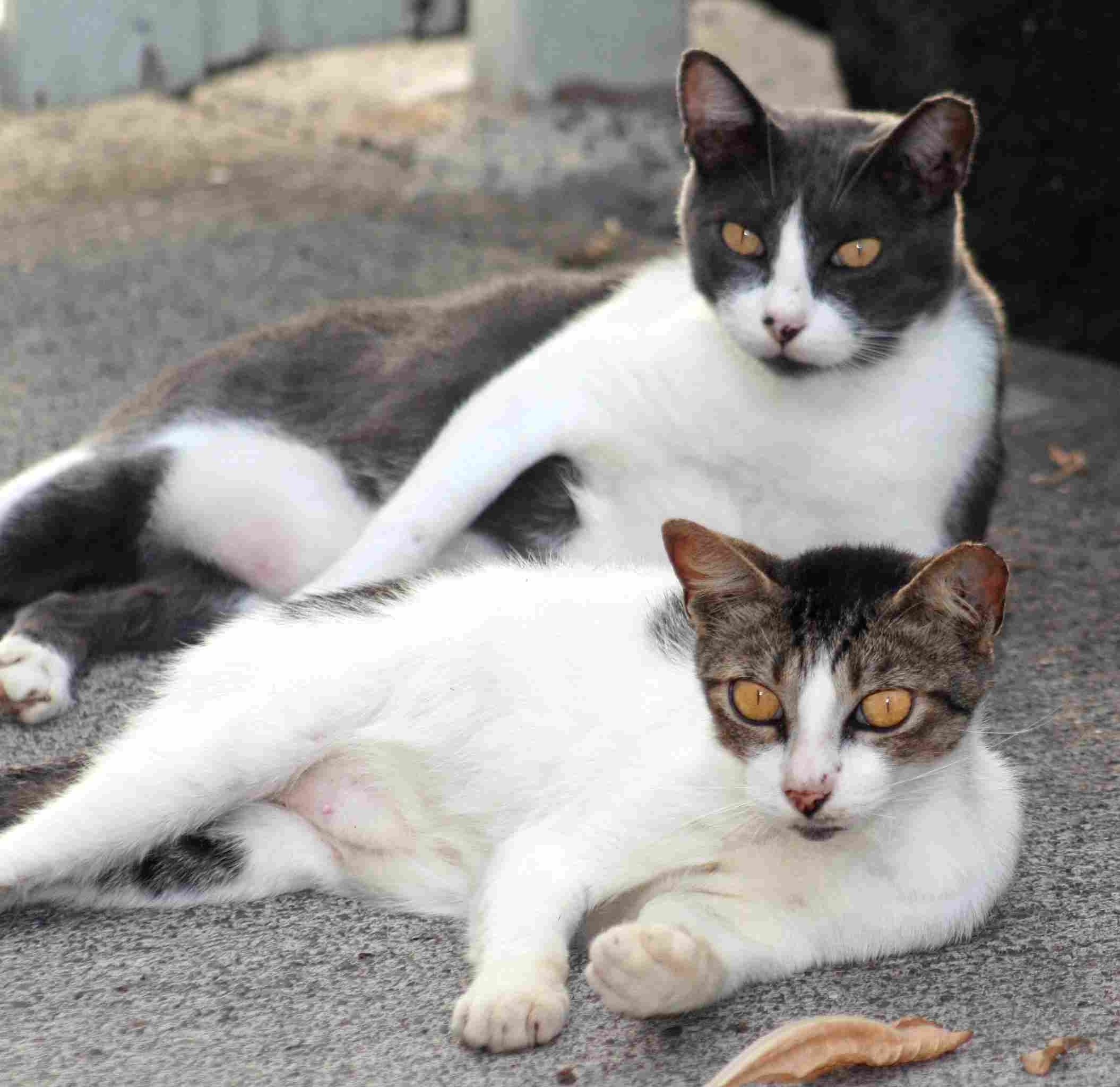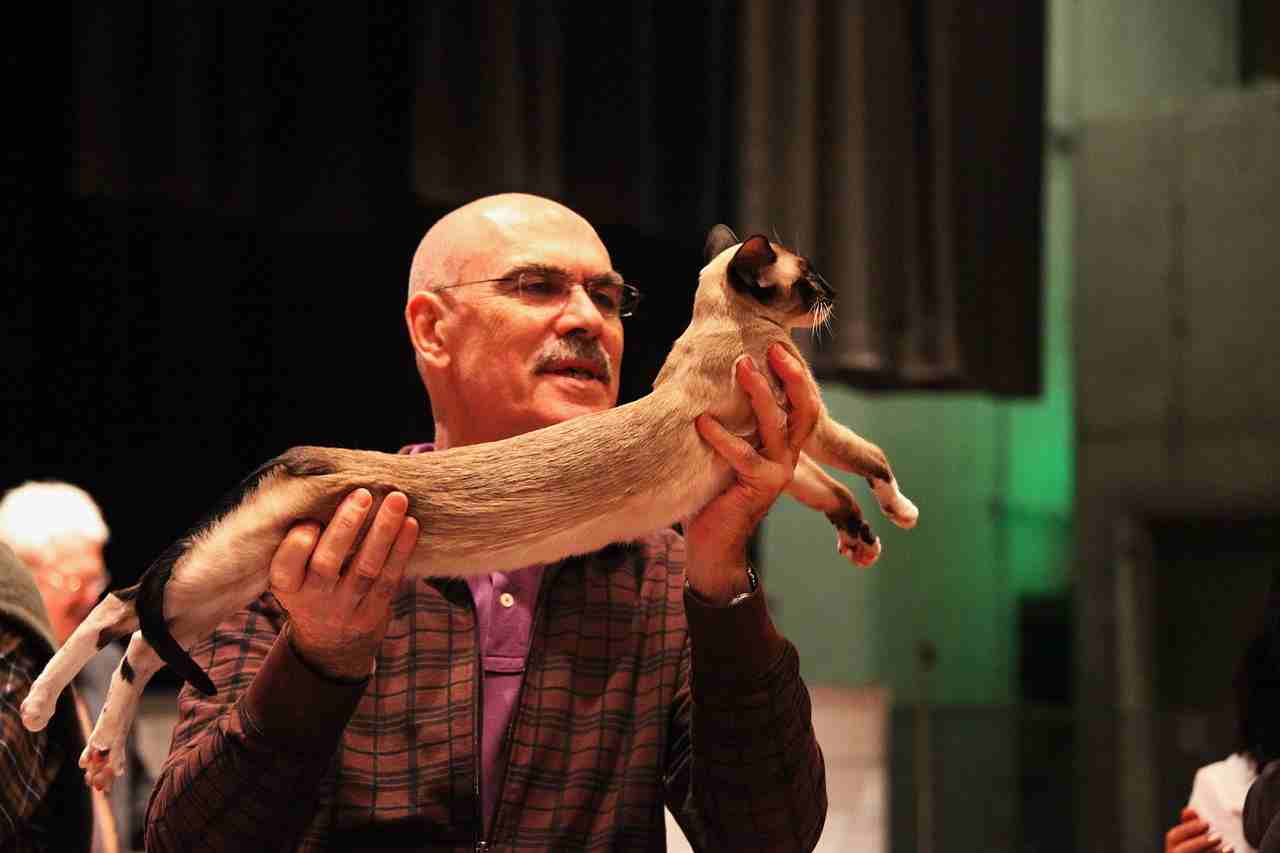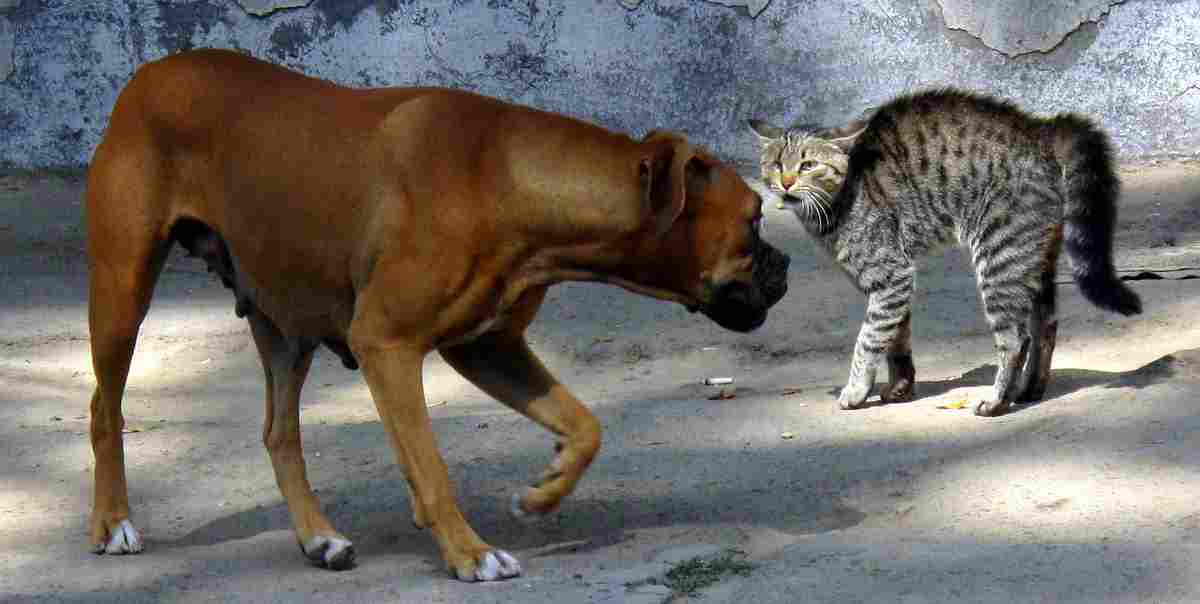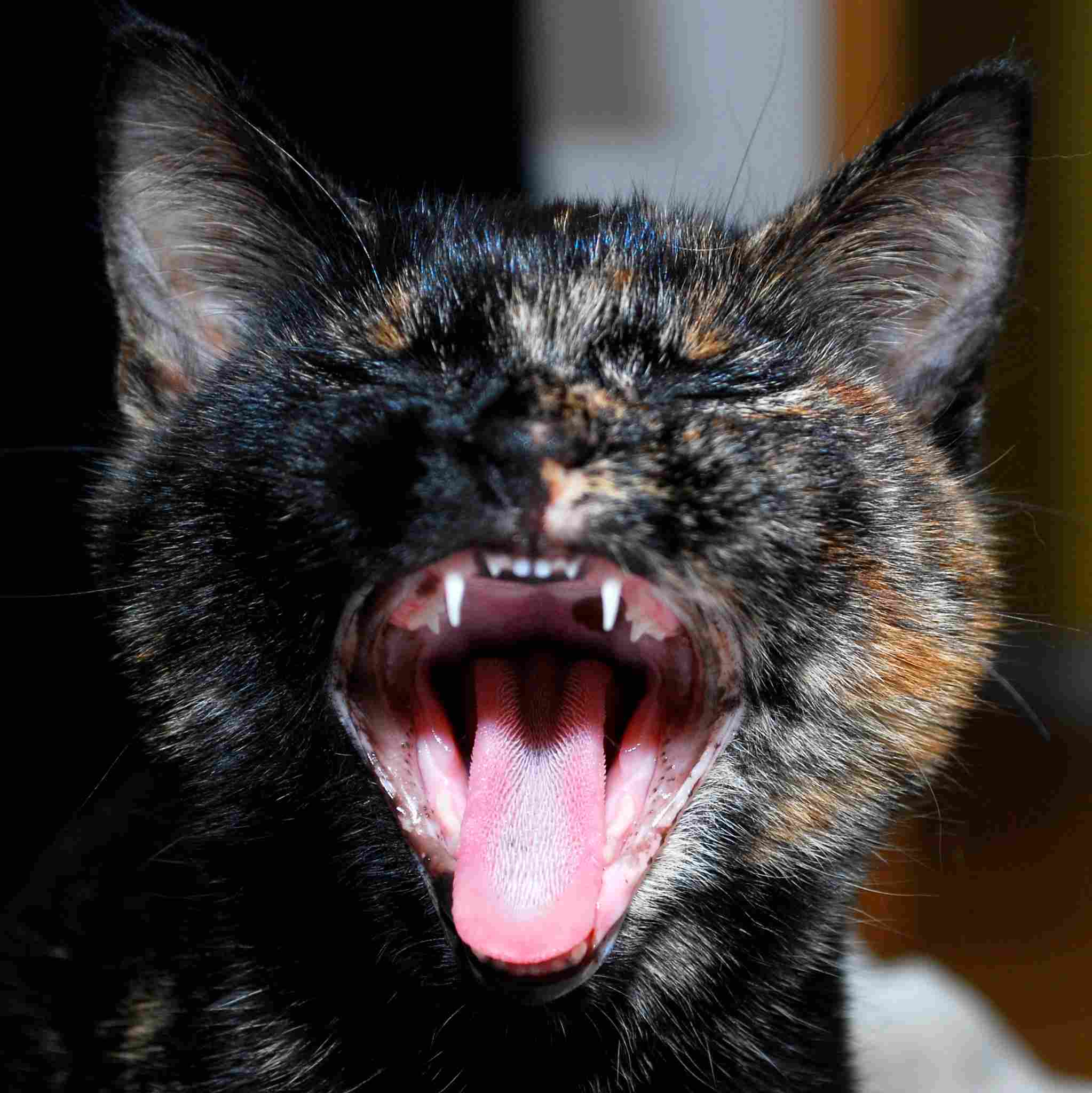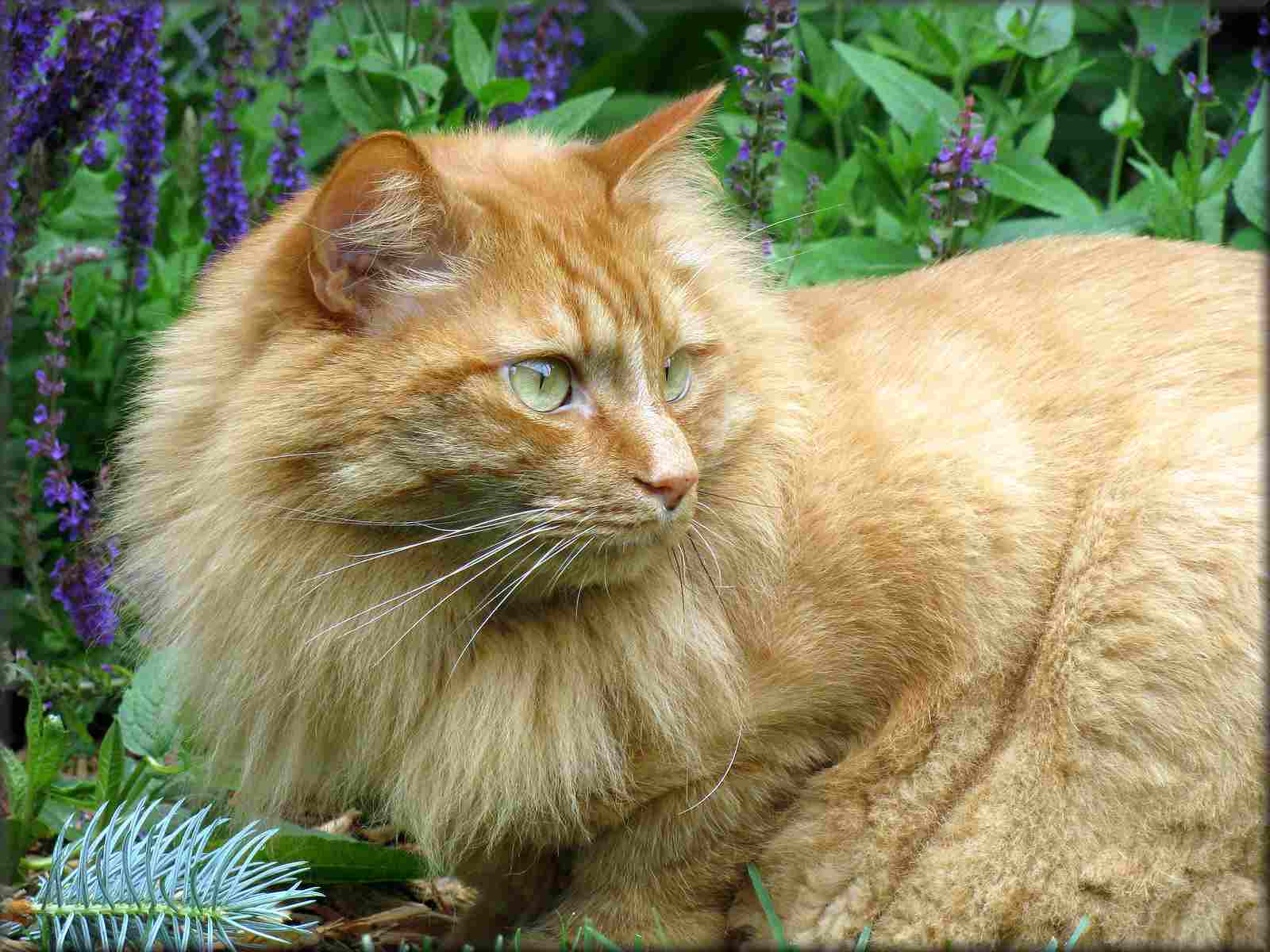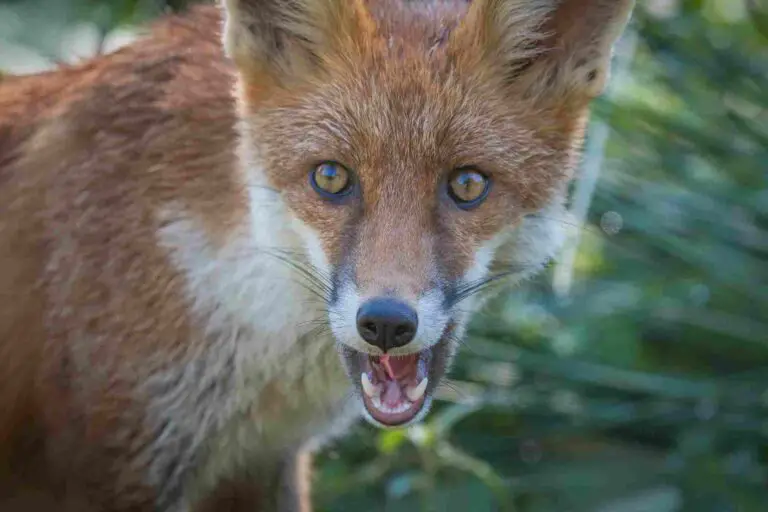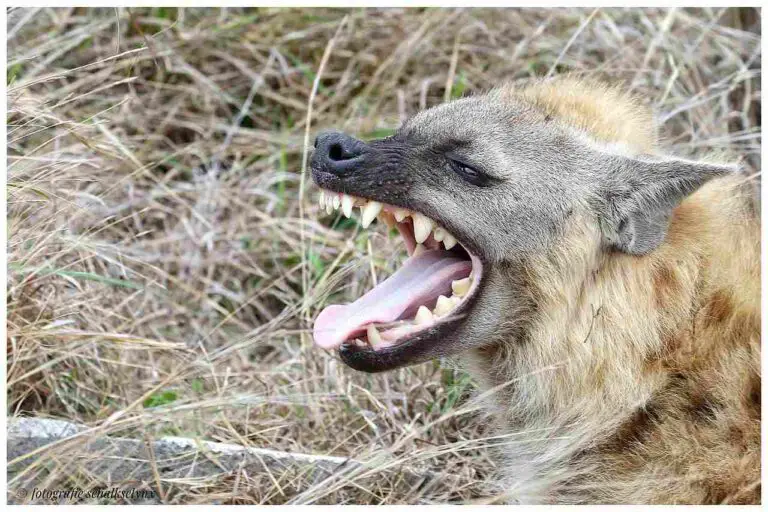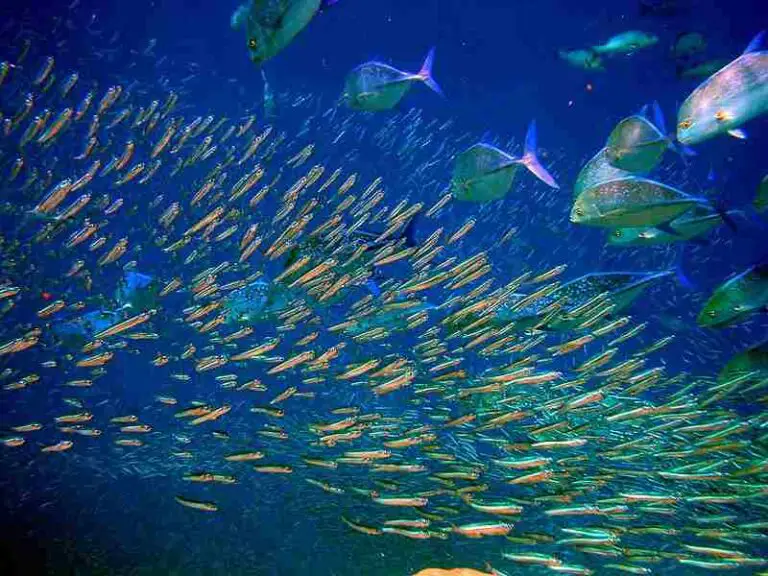Raccoon Vs Cat Size, Weight, Overall Comparison
Exploring the scenario of a confrontation between a raccoon and a cat, we delve into the dynamics influenced by size, strength, and predatory intelligence. While cats are agile and adept hunters, the raccoon’s overall physical advantages and superior predatory instincts position it as the likely victor in a physical encounter.
Raccoon vs Cat Who Wins: Unraveling Size and Predatory Intelligence
In the imagined face-off between a raccoon and a cat, an analysis of shared and distinct traits reveals a nuanced dynamic. Despite a cat’s agility and hunting prowess, the raccoon’s larger size, superior strength, and heightened predatory intelligence give it a clear advantage in potential confrontations.
I). Raccoon’s Larger Size and Weight:
– Raccoons, generally larger and heavier than domestic cats, possess physical attributes that contribute to their advantage in a potential confrontation. Size and weight are critical factors in determining the outcome.
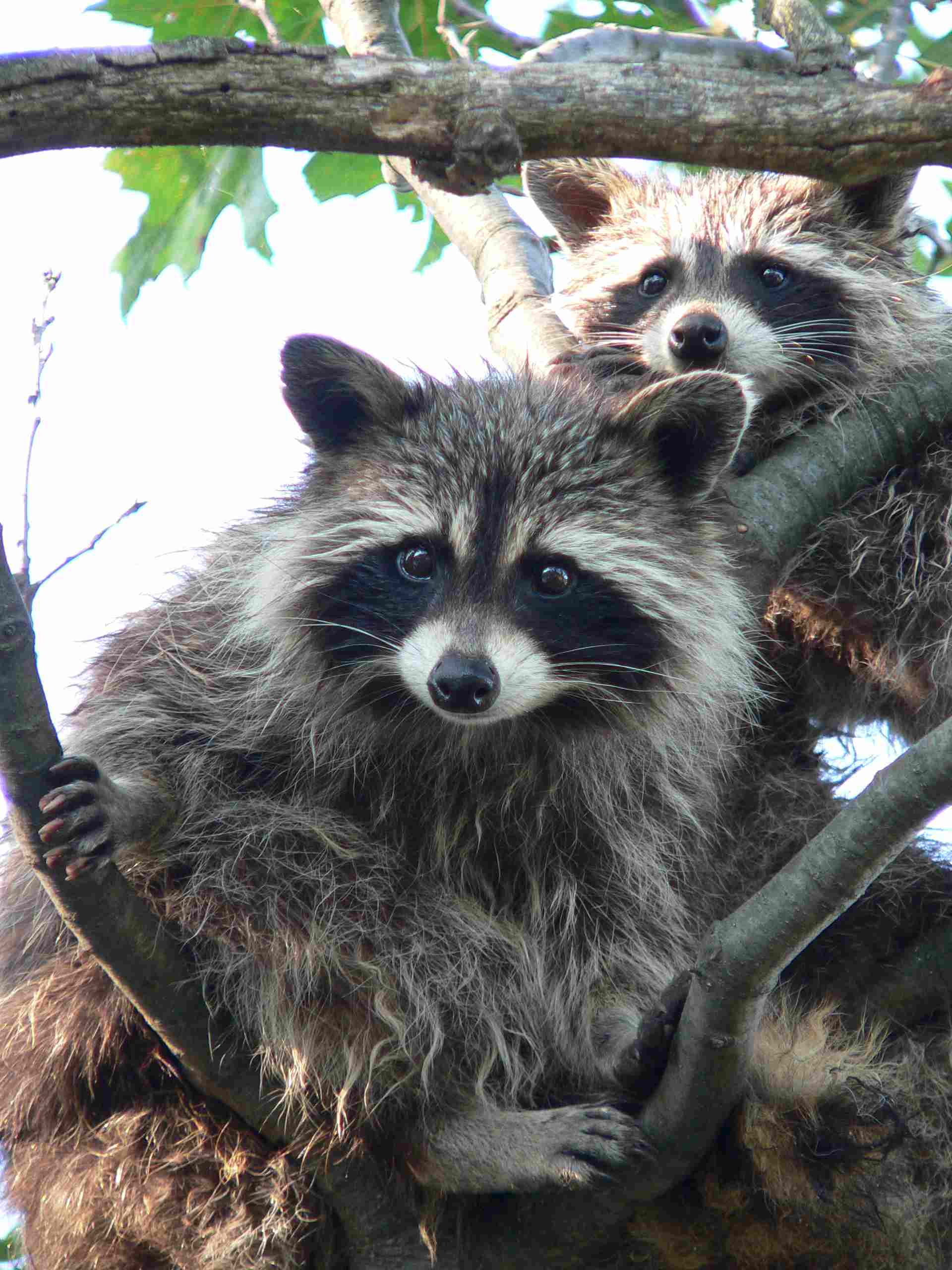
II). Raccoon’s Superior Strength:
– The raccoon’s physical strength surpasses that of a typical domestic cat. This strength advantage becomes a decisive factor in a direct physical confrontation, influencing the likely victor.
III). Raccoon’s Predatory Intelligence:
– Raccoons exhibit a level of predatory intelligence that aids them in assessing and responding to situations effectively. This cognitive prowess enhances their ability to strategize and prevail in encounters with (domestic) cats.
IV). Cat’s Agility and Hunting Skills:
– While domestic cats are renowned for their agility and hunting skills, these traits may be insufficient against the raccoon’s size and strength. The raccoon’s predatory intelligence further tips the balance in its favor.
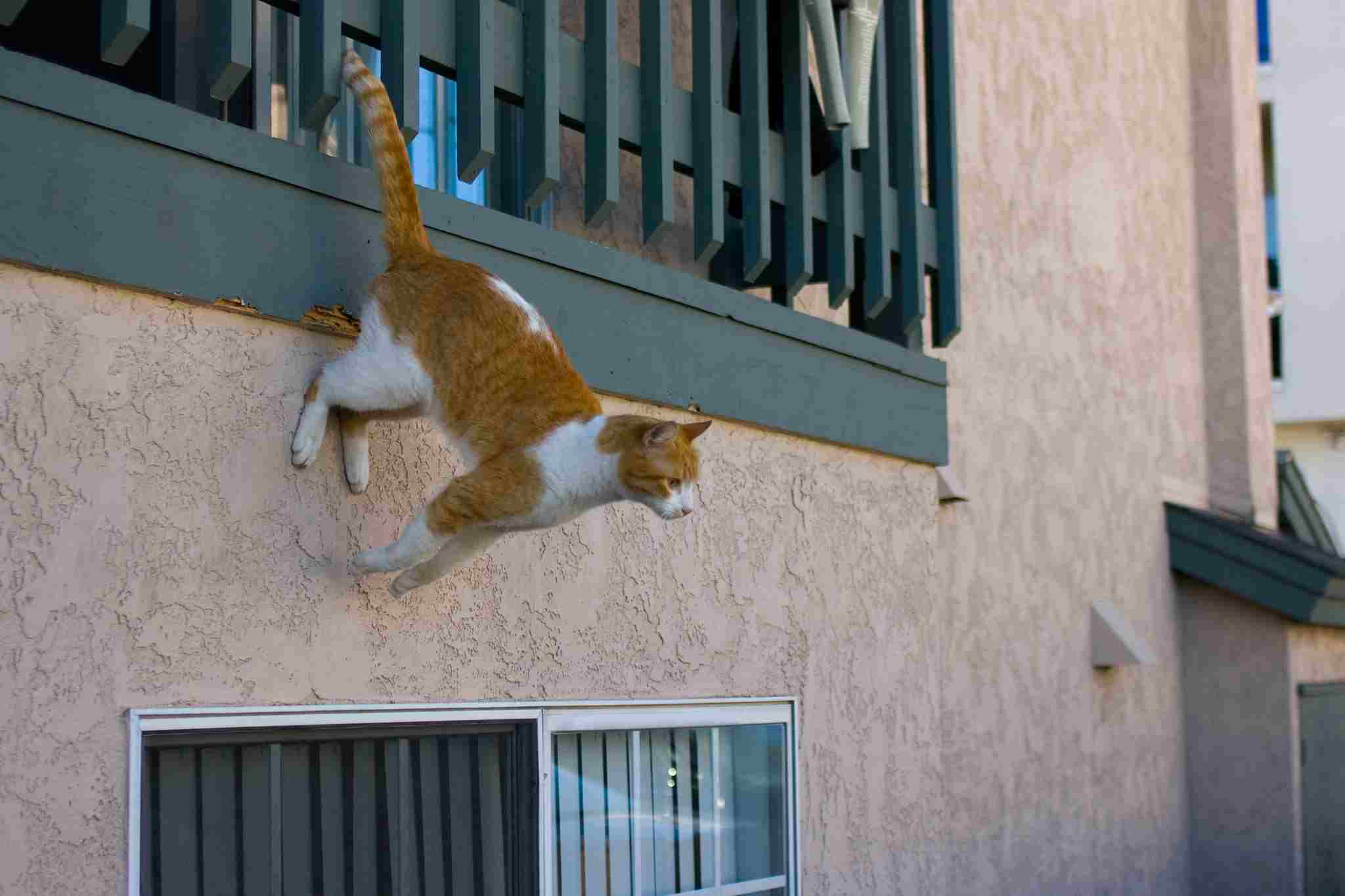
V). Predicting Outcomes:
– In a hypothetical fight, the raccoon’s larger size, greater weight, superior strength, and heightened predatory intelligence position it as the likely winner over a domestic cat. The combined advantage in these aspects creates a formidable opponent.
VI). Real-World Considerations:
– Real-world interactions between raccoons and cats can be influenced by various factors, including individual temperament, territory, and environmental conditions. However, the raccoon’s physical advantages and predatory intelligence contribute to predicting outcomes in its favor.
VII). Overall Dynamics:
– This analysis emphasizes that in a raccoon vs cat scenario, the raccoon’s size, strength, and predatory intelligence establish it as the probable victor. While domestic cats exhibit hunting prowess, the pronounced differences in physical attributes contribute to the nuanced dynamics between these animals, highlighting the importance of size and predatory intelligence in potential confrontations.
*Details of Comparison
| Criteria | Raccoons | Cats |
| Appearance | Robust build, facial mask, ringed tail |
Diverse appearance, slender body, retractable claws
|
| Size | Larger, 16-28 inches (excluding tail) |
Varies, generally 18-20 inches (excluding tail)
|
| Weight | 10-30 pounds | 5-20 pounds |
| Bite Force (PSI) | 35-45 PSI |
Generally lower than raccoons
|
| Physical Offensive Advantages | Sharp claws, strong bite, dexterous hands |
Retractable claws, agility
|
| Physical Defensive Advantages | Climbing skills, defensive posture, vocalizations |
Reflexes, agility, vocalizations
|
| Speed | Up to 15 mph | Up to 30 mph |
| Agility | Climbing agility, dexterous hands |
Quick and precise movements
|
| Senses | Keen hearing, smell, adapted eyesight |
Night vision, acute hearing, keen sense of smell
|
| Overall Physical Capacity | Robust build, dexterous hands |
Agility, precision, offensive capabilities
|
| Habitat Preference(s) | Versatile, found in various environments |
Domesticated, adaptable to diverse habitats
|
| Tracks | Distinctive resembling tiny human handprints |
Smaller, rounded with retractable claws
|
| Lifespan | 2-7 years (wild), longer in captivity |
12-18 years on average
|
| Mode of Feeding | Omnivorous | Carnivorous |
| Intelligence | Highly intelligent, problem-solving |
Cognitive abilities, social intelligence
|
| Social Behavior | Generally solitary, loose family groups |
Varied social behaviors
|
| Mode of Reproduction | Breeding season, smaller litters |
Year-round breeding, larger litters
|
| Parental Behavior | Maternal care, kits with mother for months |
Maternal care, kittens with mother until weaned
|
| Proximity to Human-Inhabited Areas | Highly adaptable, found near human dwellings |
Common in urban and suburban areas
|
| Behavior Toward Humans | Cautious but can adapt to human presence |
Varied behaviors from affectionate to aloof
|
| Danger Posed to Humans | Generally minimal danger under normal circumstances |
Minimal danger under normal circumstances
|
| Associated Precautions | Caution advised, especially with wild or unfamiliar individuals |
Caution advised, especially with unfamiliar cats
|
| Conservation Status | Least concern |
Not a conservation concern, feral populations impact local wildlife
|
Key Points
- Both raccoons and cats exhibit adaptability to human-inhabited areas.
- Raccoons are generally larger, omnivorous, and more adaptable, while cats have a longer lifespan, diverse breeds, and are obligate carnivores.
- Raccoons and domestic cats both display maternal care and keen senses.
- Caution is advised in interactions with both species, especially with unfamiliar individuals.
- Conservation status varies, with raccoons considered of least concern and feral cat populations impacting local wildlife.
1. Taxonomy:
Raccoon (Procyon lotor)
Kingdom: Animalia
Phylum: Chordata
Class: Mammalia
Order: Carnivora
Family: Procyonidae
Genus: Procyon
Species: P. lotor
Cat (Domestic cat, Felis catus)
Kingdom: Animalia
Phylum: Chordata
Class: Mammalia
Order: Carnivora
Family: Felidae
Genus: Felis
Species: F. catus
2. Appearance:
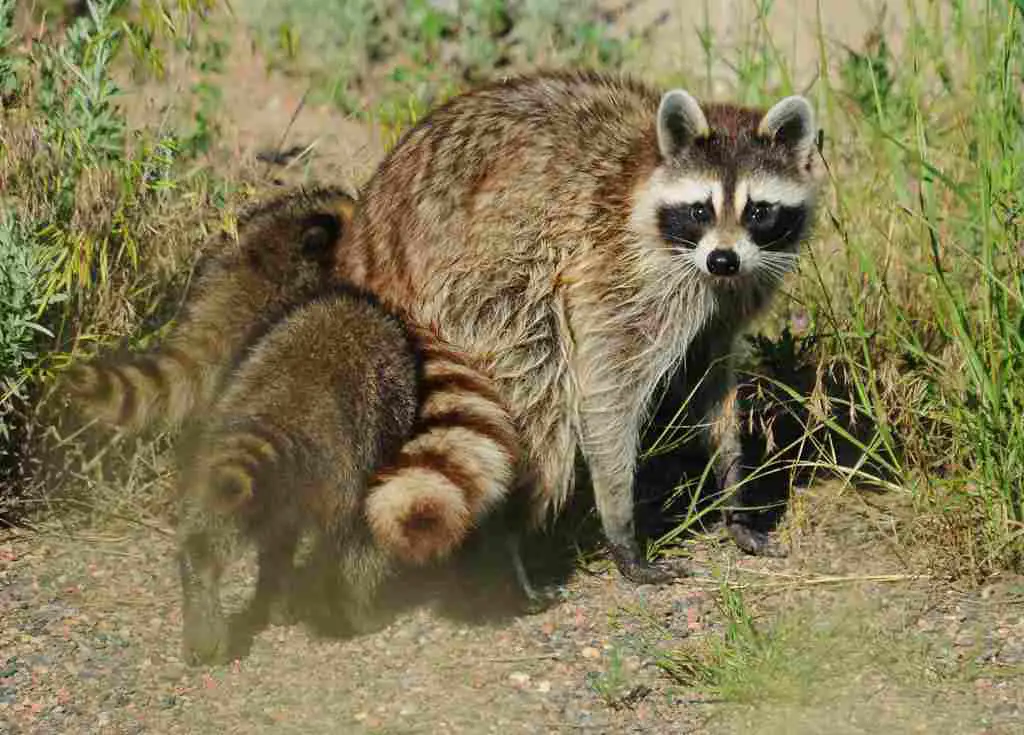
Raccoon: Characterized by a distinctive mask-like facial pattern, bushy ringed tail, and a robust body covered in a mix of gray, brown, and black fur. Agile hands with five fingers make them adept at manipulating objects.
Cat: Diverse in appearance due to various breeds, but commonly has a slender body, sharp retractable claws, and a range of coat colors and patterns. Domestic cats exhibit variations in fur length.
Comparison: Raccoons possess a more robust build with a masked facial pattern, while cats display a sleeker physique with a greater range of coat variations.
Ecological Implications: Raccoons’ distinctive appearance aids in identification, potentially influencing ecological studies and wildlife management. Cats, especially in diverse breeds, may show adaptations to specific environments.
3. Size:
Raccoon: Typically larger, with lengths ranging from 16 to 28 inches (40 to 70 cm) excluding the tail, which can add an additional 8 to 16 inches (20 to 40 cm).
Cat: Varies widely in size based on breed. Domestic cats generally range from 18 to 20 inches (45 to 50 cm) in length, excluding the tail.
Comparison: Raccoons are generally larger than domestic cats, exhibiting a broader physical presence.
Ecological Implications: Size differences impact ecological roles, as larger raccoons may have different predatory or scavenging capabilities compared to smaller domestic cats.
4. Weight:
Raccoon: Typically weighs between 10 to 30 pounds (4.5 to 13.5 kg), with males generally heavier than females.
Cat: Weight varies widely among breeds but generally ranges from 5 to 20 pounds (2.3 to 9 kg).
Comparison: Raccoons are generally heavier than domestic cats, exhibiting a more robust build.
Ecological Implications: Weight affects ecological interactions, influencing prey selection, and competition for resources.
5. Bite Force (PSI):
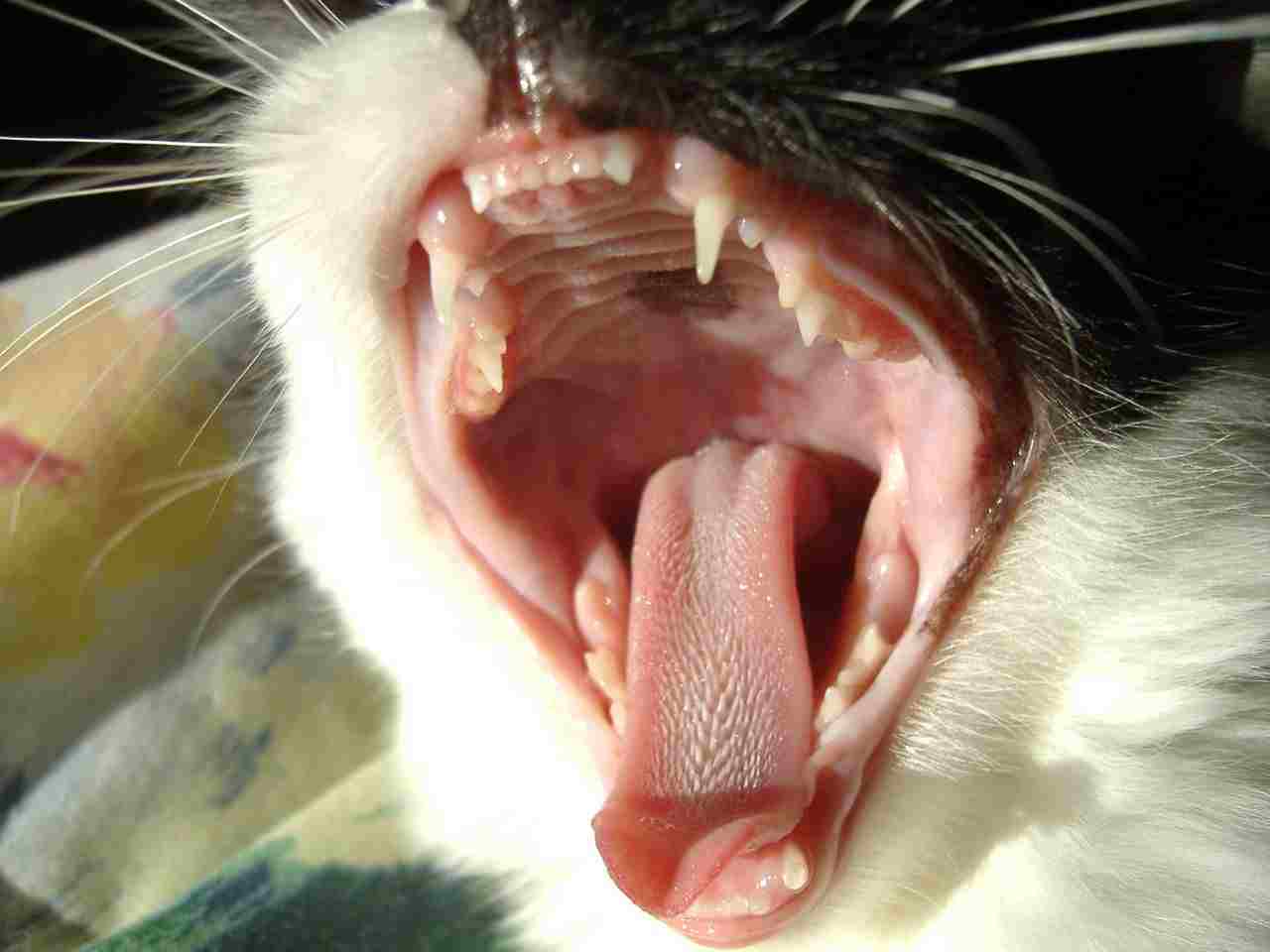
Raccoon: Estimated bite force ranges from 35 to 45 pounds per square inch (PSI).
Cat: Estimated bite force varies among breeds but is generally lower than that of raccoons.
Comparison: Raccoons possess a stronger bite force compared to domestic cats.
Ecological Implications: Bite force influences hunting strategies and ecological roles, with raccoons potentially having an advantage in handling certain prey or accessing resources.
6. Physical Offensive Advantages:
Raccoon: Sharp claws and a strong bite contribute to effective offensive capabilities. Their dexterous hands allow them to manipulate objects and potentially fend off threats.
Cat: Sharp retractable claws and teeth provide effective offensive tools. Cats may use agility and speed in hunting as offensive strategies.
Comparison: Both species have effective offensive capabilities, with raccoons emphasizing dexterity, and cats relying on agility and speed.
Ecological Implications: Offensive abilities influence hunting success and interactions within ecosystems, shaping the dynamics of predator-prey relationships.
7. Physical Defensive Advantages:
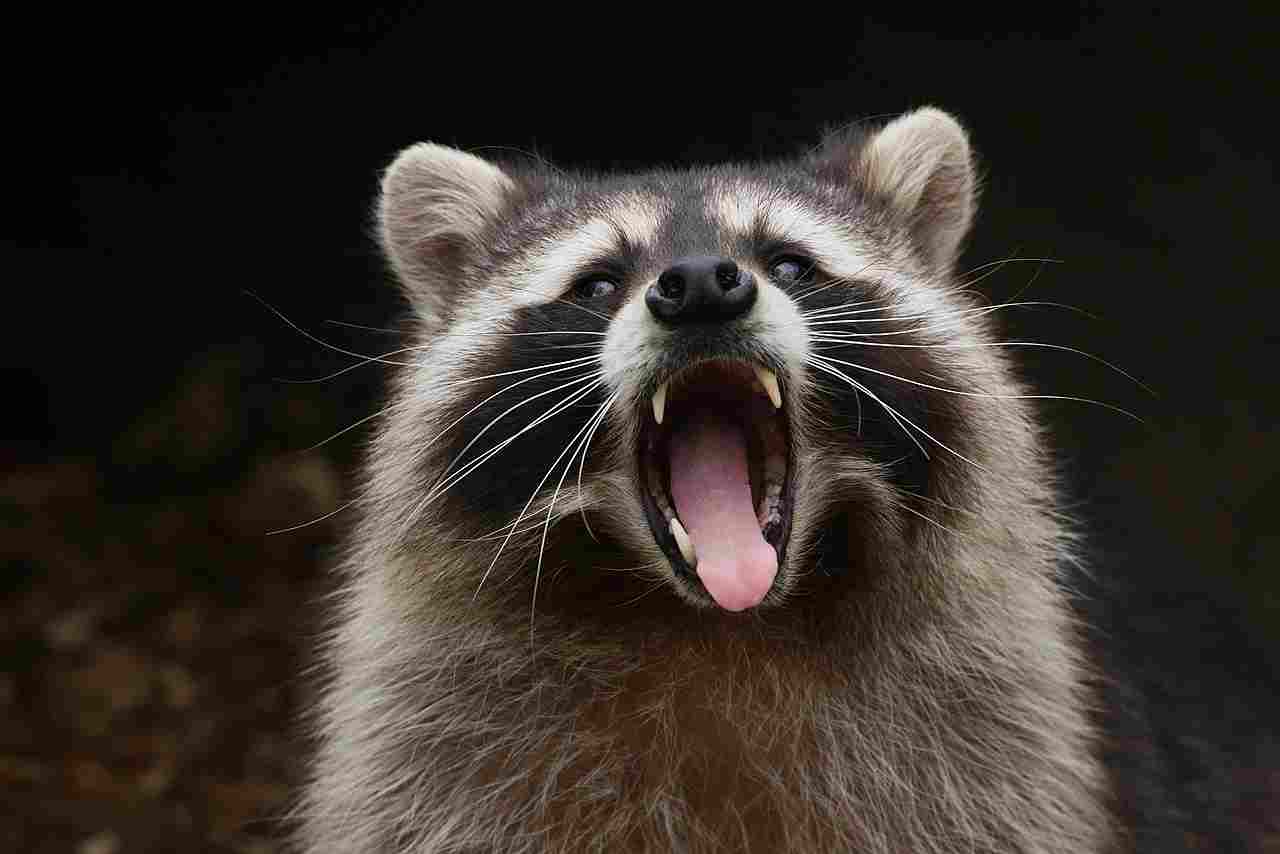
Raccoon: Agile climbing skills, sharp claws, and a defensive posture can serve as protective mechanisms. They may also emit vocalizations to deter threats.
Cat: Quick reflexes, agility, and the ability to retreat to elevated surfaces provide defensive advantages. Vocalizations and hissing are common defensive behaviors.
Comparison: Both species exhibit defensive strategies, with raccoons relying on climbing and vocalizations, while cats emphasize agility and retreat.
Ecological Implications: Defensive behaviors impact survival rates and interactions with predators, influencing the balance of species within ecosystems.
8. Speed (Km/hour or Mile/hour):
Raccoon: Capable of reaching speeds up to 15 miles per hour (24 km/h) in short bursts, particularly when escaping threats.
Cat: Domestic cats can achieve speeds of 30 miles per hour (48 km/h) in short sprints, showcasing remarkable bursts of speed.
Comparison: Cats generally exhibit higher sprinting speeds compared to raccoons.
Ecological Implications: Speed impacts hunting success and escape from predators, influencing the ecological roles and interactions of these species.
9. Agility:
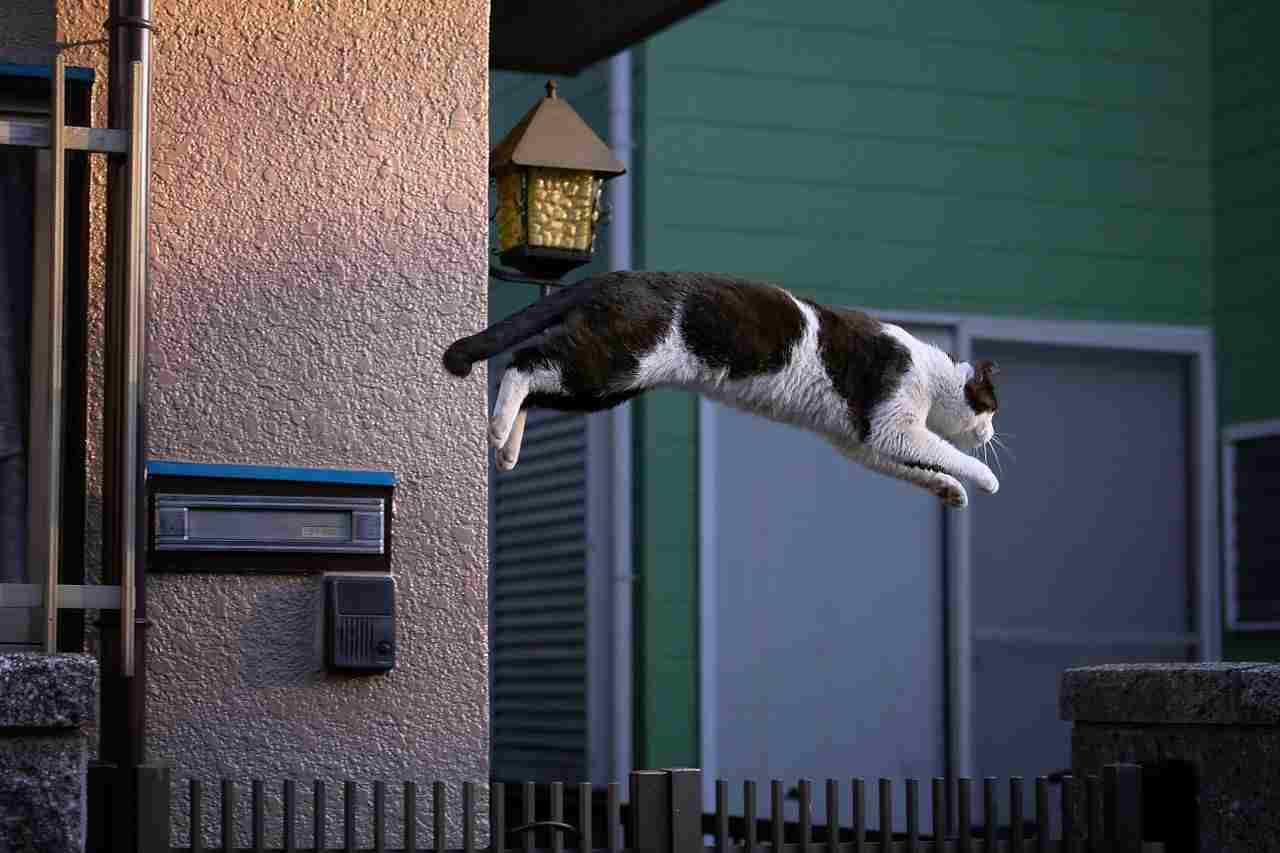
Raccoon: Display notable agility, especially in climbing trees and navigating various terrains. Dexterous hands contribute to their ability to manipulate objects.
Cat: Renowned for exceptional agility, displaying quick and precise movements, especially when hunting or navigating obstacles.
Comparison: Both raccoons and cats demonstrate high levels of agility, albeit in different contexts. Raccoons may excel in climbing, while cats showcase agility in ground-level movements.
Ecological Implications: Agility influences hunting strategies, resource access, and overall adaptability within diverse ecosystems.
10. Senses:
Raccoon: Possess keen senses of hearing, smell, and touch. Their eyesight is adapted to low light conditions, contributing to their nocturnal behavior.
Cat: Excel in night vision, have acute hearing, and a highly developed sense of smell. Whiskers aid in tactile perception.
Comparison: Both raccoons and cats exhibit well-developed sensory adaptations, with differences in emphasis on vision, hearing, and touch.
Ecological Implications: Sensory adaptations influence their roles as predators or scavengers, impacting their ability to locate prey and navigate their environments.
11. Overall Physical Capacity:
Raccoon: Robust build, sharp claws, and a strong bite contribute to their overall physical prowess. Dexterous hands enhance their ability to interact with objects.
Cat: Agile, with retractable claws and sharp teeth, showcasing a combination of speed, precision, and offensive capabilities.
Comparison: Both species possess impressive overall physical capacities, with raccoons emphasizing strength and manipulation, while cats emphasize agility and precision.
Ecological Implications: Overall physical capacity influences hunting success, resource utilization, and survival in various ecological niches.
12. Habitat Preference(s):
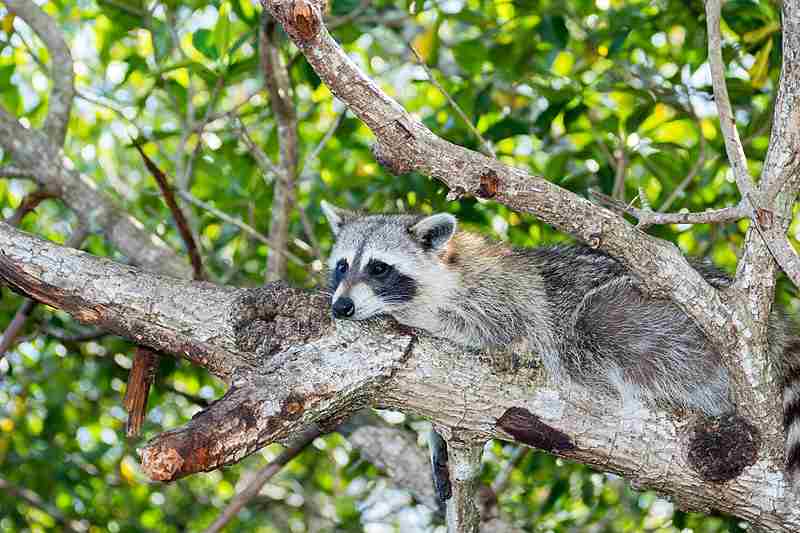
Raccoon: Versatile in habitat selection, found in forests, urban areas, and near water sources. They are highly adaptable to different environments.
Cat: Domestic cats have adapted to living alongside humans but also exhibit a range of habitats, including rural, suburban, and urban areas.
Comparison: While raccoons are adaptable, domestic cats often show a strong association with human-inhabited areas.
Ecological Implications: Habitat preferences impact interactions with other species, resource utilization, and potential conflicts with human activities.
13. Raccoon Vs Cat Paw Prints/Tracks:
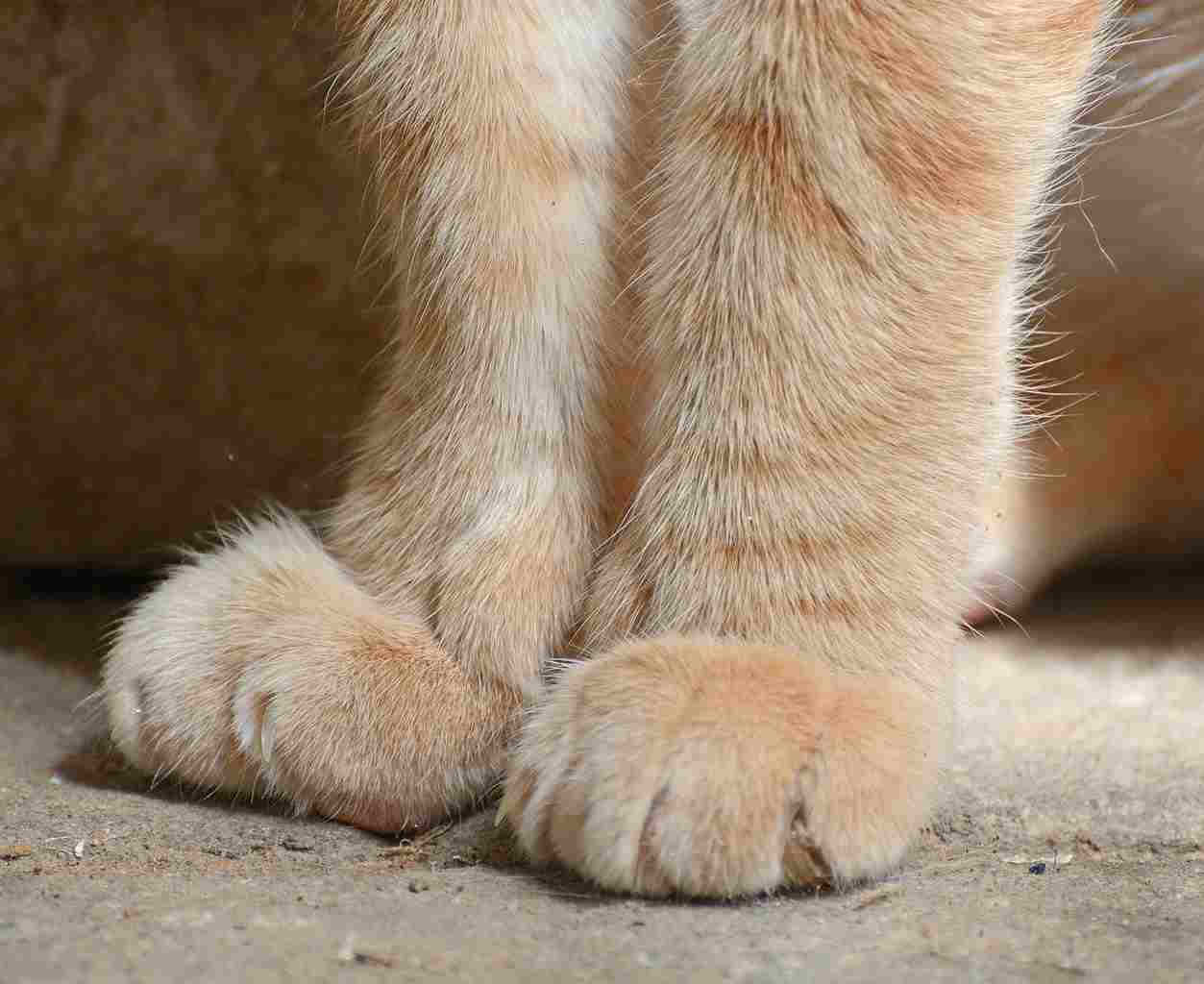
Raccoon: Distinctive tracks with five toes resembling tiny human hands, often showing claw marks. Front tracks are larger than hind tracks.
Cat: Smaller, rounded tracks with four toes and retractable claws. Size varies with the individual cat.
Comparison: Raccoon tracks are more distinctive, resembling miniature human handprints, while cat tracks are smaller and more rounded.
Ecological Implications: Track identification aids in ecological studies, helping to understand species distribution, movement patterns, and potential ecological impacts.
14. Lifespan:
Raccoon: In the wild, typically live 2 to 3 years. However, if they survive the challenges of early life, they can live up to 5 to 7 years. Captive raccoons may live longer.
Cat: Domestic cats, when well-cared for, can live 12 to 18 years on average, with some reaching their early twenties.
Comparison: Domestic cats generally have a longer lifespan compared to raccoons.
Ecological Implications: Lifespan influences population dynamics, reproductive strategies, and overall contributions to the ecosystem.
15. Mode of Feeding:
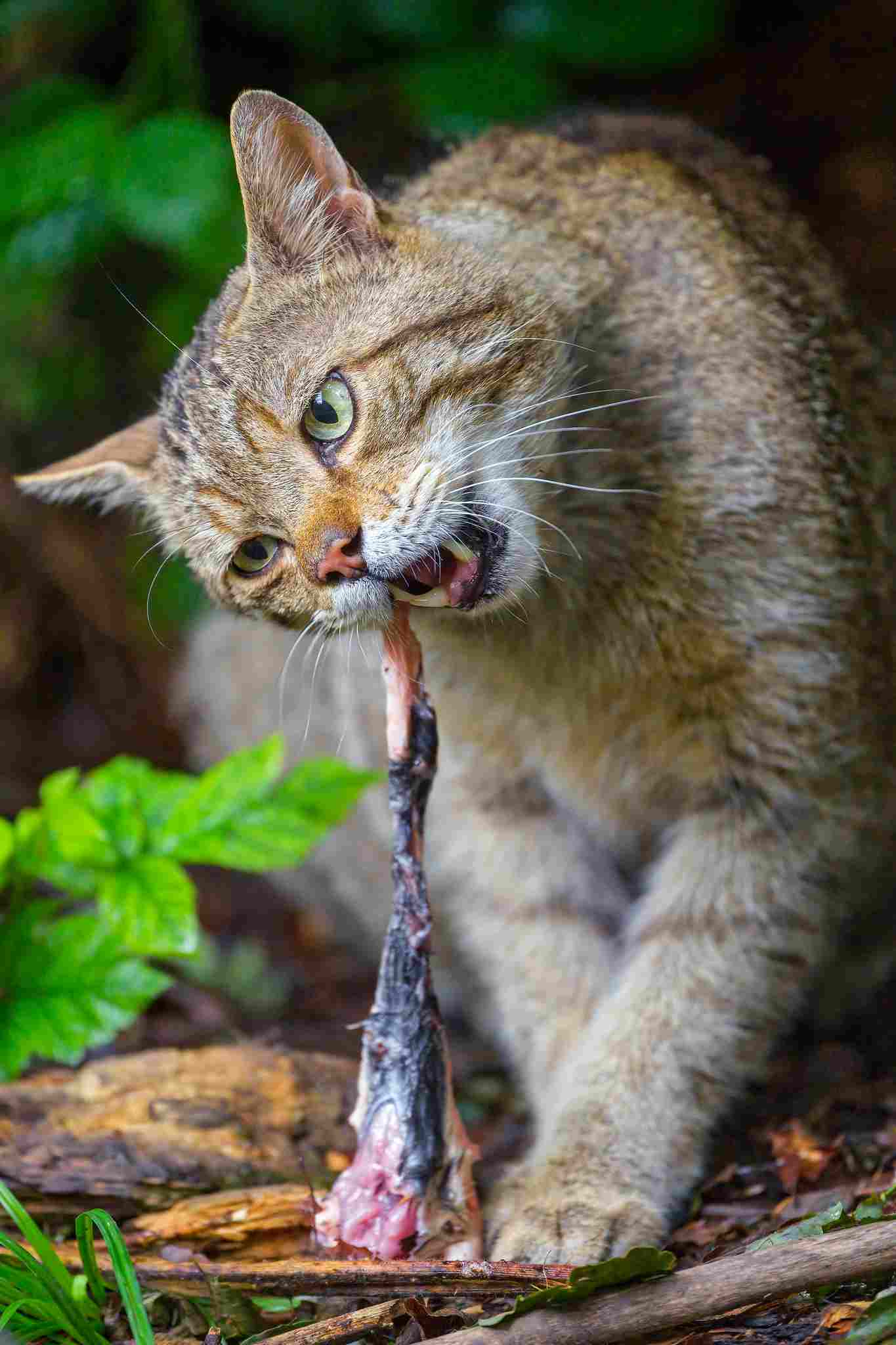
Raccoon: Omnivorous diet includes fruits, vegetables, insects, small mammals, and scavenging. Opportunistic feeders with a diverse palate.
Cat: Carnivores with a diet primarily consisting of meat, including commercial cat food, prey, or human-provided meals.
Comparison: While raccoons are omnivores, cats are obligate carnivores with a diet mainly focused on meat.
Ecological Implications: Feeding habits impact prey populations, competition for resources, and potential interactions with other species in the ecosystem.
16. Intelligence:
Raccoon: Considered highly intelligent with problem-solving abilities. Known for opening locks, manipulating objects, and adapting to various environments.
Cat: Domestic cats display cognitive abilities, problem-solving skills, and social intelligence. They can learn and adapt to their surroundings.
Comparison: Both raccoons and cats exhibit intelligence, with raccoons often noted for their problem-solving capabilities.
Ecological Implications: Intelligence influences the ability to exploit resources, adapt to changing conditions, and compete with or avoid predators.
17. Social Behavior:
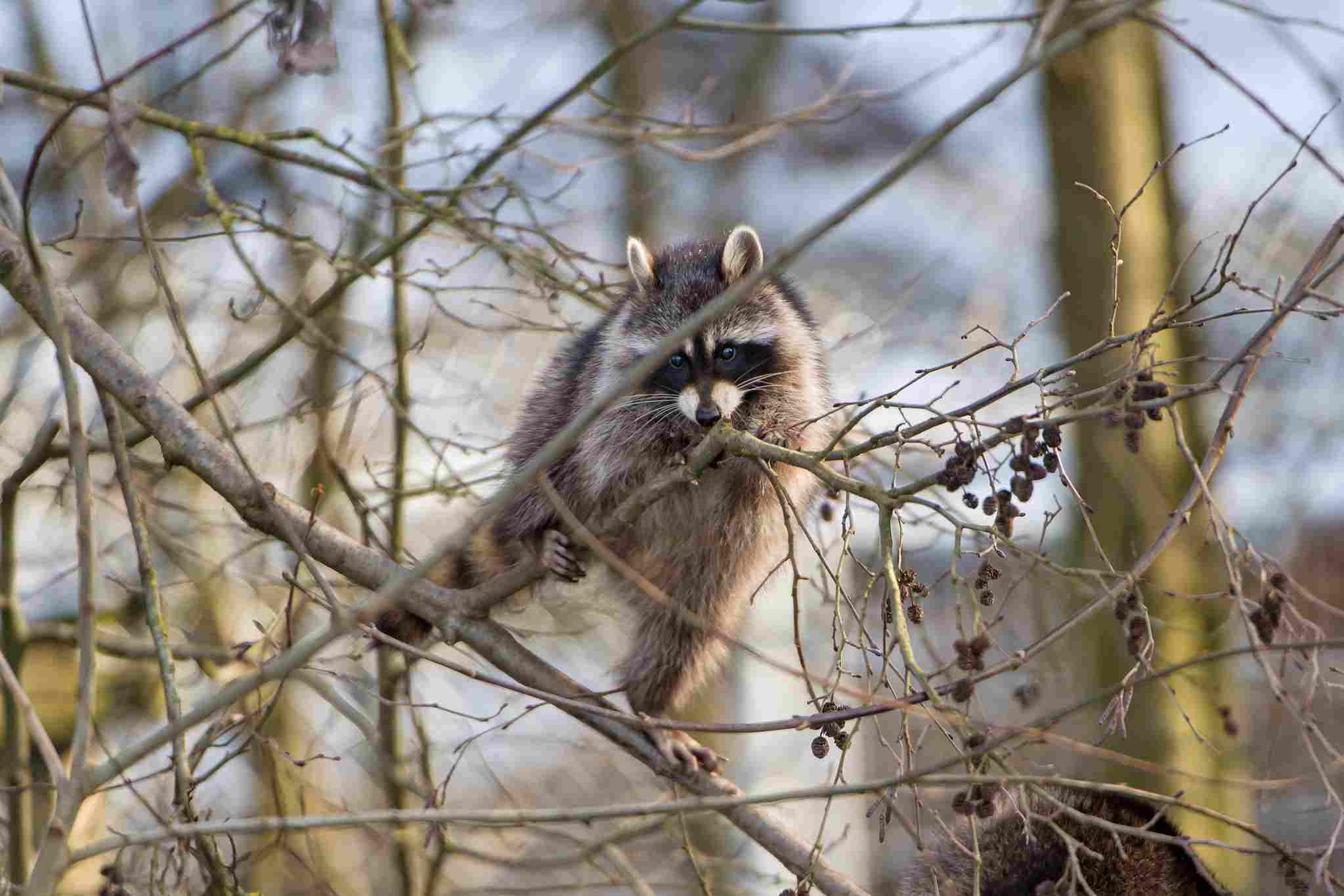
Raccoon: Generally solitary, but social interactions occur, especially during mating season. Females may raise offspring in loose family groups.
Cat: Domestic cats exhibit a range of social behaviors, from solitary to social, depending on individual temperament and upbringing.
Comparison: Raccoons tend to be more solitary, while domestic cats can exhibit varying degrees of social behavior.
Ecological Implications: Social behaviors impact breeding strategies, resource utilization, and potential interactions with other members of their species.
18. Mode of Reproduction:
Raccoon: Breeding season typically occurs in late winter to early spring. Females give birth to a litter of 2 to 5 kits after a gestation period of around 63 days.
Cat: Domestic cats can breed throughout the year. The gestation period is approximately 63 days, and litters usually consist of 4 to 6 kittens.
Comparison: Both species have similar gestation periods, but raccoons generally have smaller litters compared to domestic cats.
Ecological Implications: Reproductive strategies impact population dynamics, especially in urban and suburban areas where interactions with humans are common.
19. Parental Behavior:
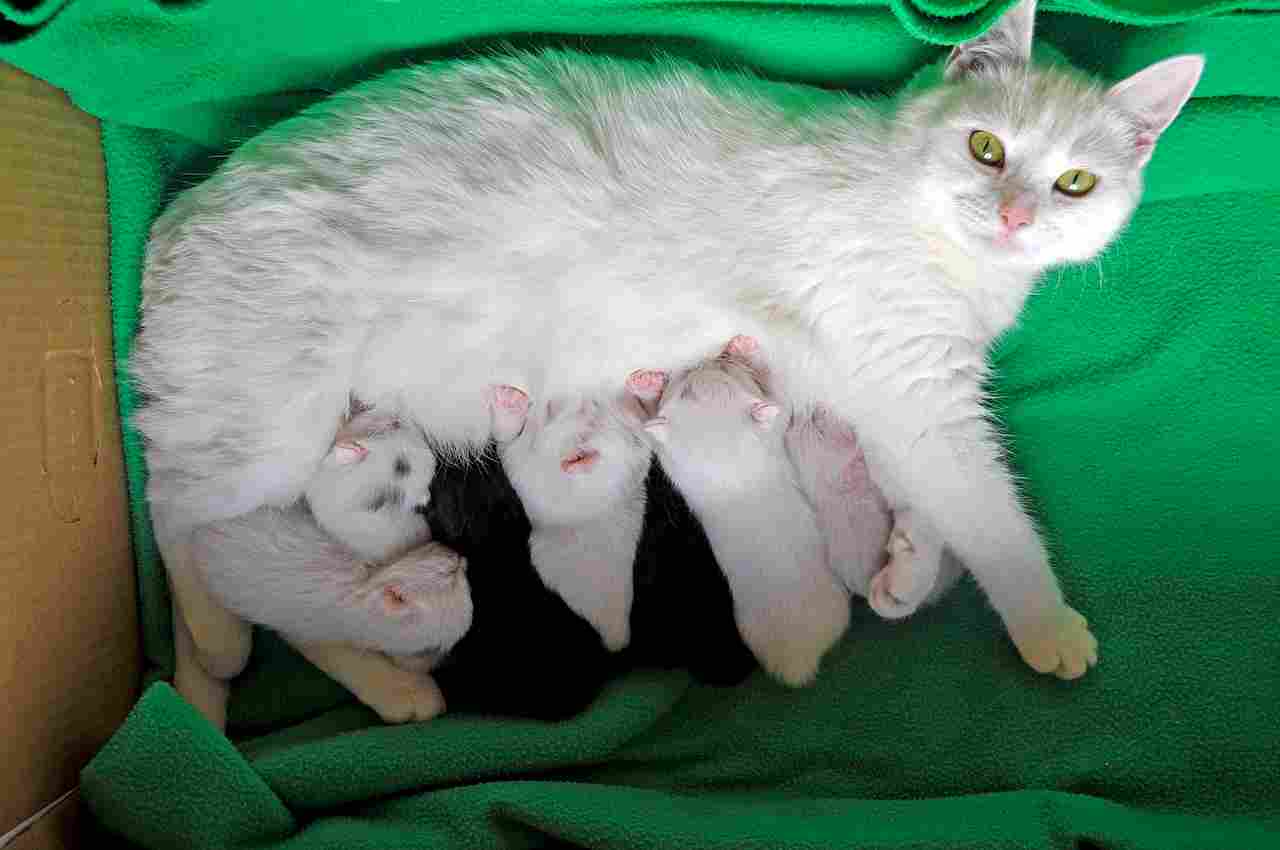
Raccoon: Female raccoons are the primary caregivers, raising their kits with maternal care. Kits remain with the mother for several months before becoming independent.
Cat: Domestic cats exhibit maternal care, nursing and grooming their kittens. Kittens stay with their mother until they are weaned and can fend for themselves.
Comparison: Both species display maternal care, ensuring the survival and development of their offspring.
Ecological Implications: Parental behaviors contribute to the survival of offspring, impacting population dynamics and overall species health.
20. Proximity to Human-Inhabited Areas:
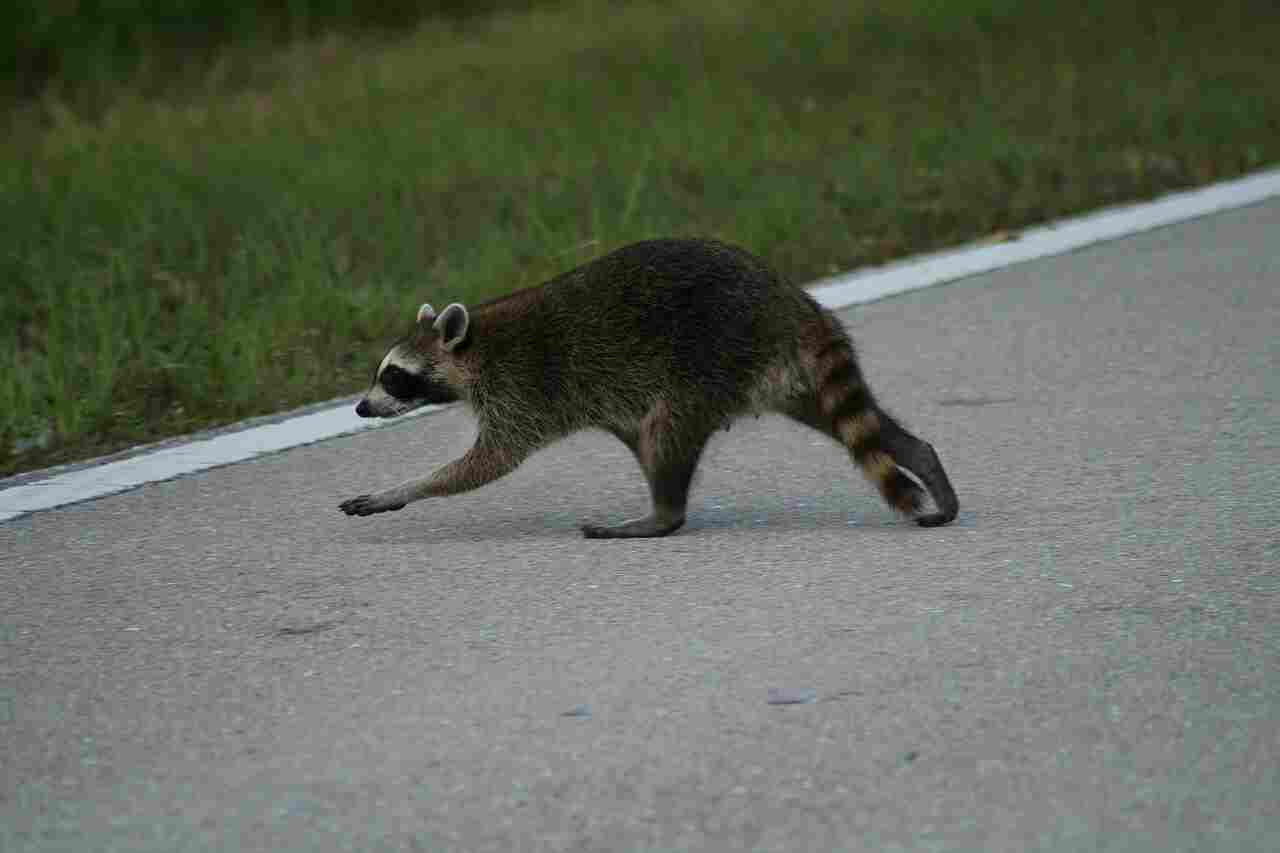
Raccoon: Highly adaptable to urban and suburban environments, often found near human dwellings in search of food.
Cat: Domestic cats are common in human-inhabited areas, especially in urban and suburban settings where they may be kept as pets.
Comparison: Both raccoons and domestic cats are frequently found in close proximity to human-inhabited areas.
Ecological Implications: Human proximity can lead to increased resource competition, potential conflicts, and altered behaviors in both species.
21. Behavior Toward Humans:
Raccoon: Generally cautious but can become accustomed to human presence, especially in urban areas where they may scavenge for food.
Cat: Domestic cats can display a range of behaviors toward humans, from affectionate to aloof, depending on individual personality and socialization.
Comparison: Raccoons may exhibit caution, while domestic cats’ behavior varies widely, influenced by individual traits and human interaction.
Ecological Implications: Human interactions can impact behaviors, resource utilization, and the overall adaptation of these species to urban environments.
22. Danger Posed to Humans:

Raccoon: Generally not aggressive toward humans, but they may defend themselves if cornered or feel threatened. Rabies is a concern, and caution is advised.
Cat: Domestic cats are typically not dangerous to humans, but scratches and bites can occur, especially in unfamiliar or stressed situations.
Comparison: Both species pose minimal danger to humans under normal circumstances, but caution is advised with any wild or unfamiliar animal.
Associated Precautions: Understanding and respecting the behavior of both raccoons and cats is crucial. Avoiding close contact and providing space is recommended.
23. Associated Precautions:
Raccoon: Avoid approaching or cornering raccoons, especially if they appear agitated. Secure trash cans to prevent scavenging and reduce potential conflicts.
Cat: Approach unfamiliar cats cautiously, especially strays or feral cats. Use gentle interactions to build trust.
Comparison: Similar precautions apply to both species, emphasizing respectful distance and minimizing potential stress.
Ecological Implications: Human behavior influences the coexistence of these species, impacting their adaptation to shared environments.
24. Conservation Status:
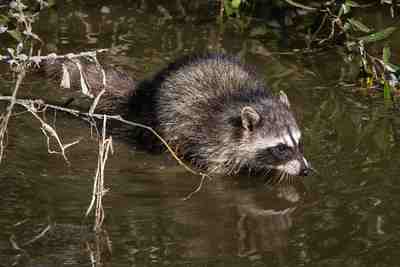
Raccoon: Considered a species of least concern. Populations are stable, and they are adaptable to various environments.
Cat: Domestic cats are not a conservation concern, but feral cat populations can impact local wildlife.
Comparison: Raccoons, as a species, have a stable population, while concerns about feral cat impact on local wildlife highlight conservation challenges.
Ecological Implications: Understanding the conservation status of each species helps inform wildlife management strategies and conservation efforts.
Summary of Comparison
Appearance:
Raccoons: Robust build, distinctive facial mask, and ringed tail.
Cats: Diverse appearance, slender body, and retractable claws.
Size:
Raccoons: Typically larger, 16 to 28 inches (excluding tail).
Cats: Varies widely, generally 18 to 20 inches (excluding tail).
Weight:
Raccoons: 10 to 30 pounds.
Cats: 5 to 20 pounds.
Bite Force (PSI):
Raccoons: 35-45 PSI.
Cats: Generally lower than raccoons.
Physical Offensive Advantages:
Raccoons: Sharp claws, strong bite, and dexterous hands.
Cats: Retractable claws and agility.
Physical Defensive Advantages:
Raccoons: Climbing skills, defensive posture, and vocalizations.
Cats: Reflexes, agility, and vocalizations.
Speed:
Raccoons: Up to 15 mph.
Cats: Up to 30 mph.
Agility:
Raccoons: Climbing agility, dexterous hands.
Cats: Quick and precise movements.
Senses:
Raccoons: Keen hearing, smell, and adapted eyesight.
Cats: Night vision, acute hearing, and keen sense of smell.
Overall Physical Capacity:
Raccoons: Robust build and dexterous hands.
Cats: Agility, precision, and offensive capabilities.
Habitat Preference(s):
Raccoons: Versatile, found in various environments.
Cats: Domesticated but adaptable to diverse habitats.
Tracks:
Raccoons: Distinctive tracks resembling tiny human handprints.
Cats: Smaller, rounded tracks with retractable claws.
Lifespan:
Raccoons: 2 to 7 years.
Cats: 12 to 18 years on average.
Mode of Feeding:
Raccoons: Omnivorous.
Cats: Carnivorous.
Intelligence:
Raccoons: Highly intelligent with problem-solving abilities.
Cats: Display cognitive abilities and social intelligence.
Social Behavior:
Raccoons: Generally solitary, loose family groups.
Cats: Varied social behaviors.
Mode of Reproduction:
Raccoons: Breeding season, smaller litters.
Cats: Year-round breeding, larger litters.
Parental Behavior:
Raccoons: Maternal care, kits with mother for months.
Cats: Maternal care, kittens with mother until weaned.
Proximity to Human-Inhabited Areas:
Raccoons: Highly adaptable, found near human dwellings.
Cats: Common in urban and suburban areas.
Behavior Toward Humans:
Raccoons: Cautious but can adapt to human presence.
Cats: Varied behaviors from affectionate to aloof.
Danger Posed to Humans:
Both species pose minimal danger under normal circumstances.
Associated Precautions:
Caution advised, especially with wild or unfamiliar individuals.
Conservation Status:
Raccoons: Least concern.
Cats: Not a conservation concern, but feral populations impact local wildlife.
Conclusion:
I. Similarities:
Both raccoons and cats exhibit adaptability to human-inhabited areas, possess keen senses, and display maternal care. They can coexist with humans, forming complex interactions.
II. Differences:
Raccoons are generally larger, omnivorous, and more adaptable in habitat selection, while domestic cats have a longer lifespan, exhibit diverse breeds, and are obligate carnivores. Understanding these differences is crucial for effective wildlife management and coexistence strategies.
